Top 10 grow your own berries and currants
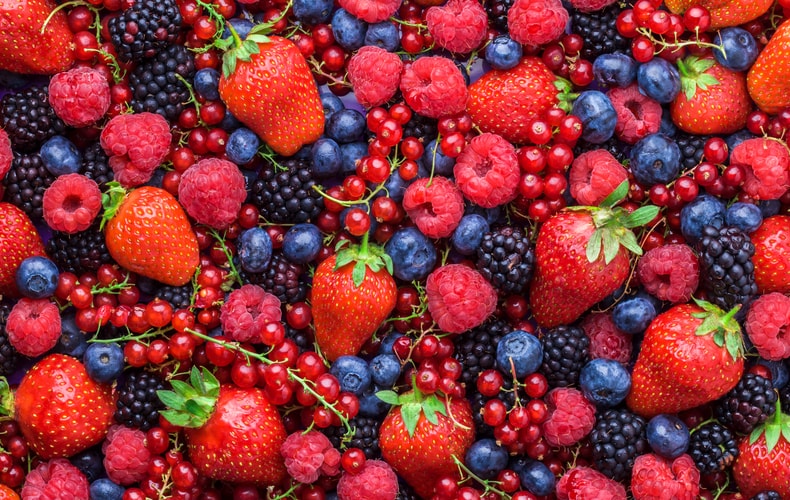
Berries and currants can be growing in hanging baskets or containers
Image: Bojsha/Shutterstock
Berries and currants can be grown in small spaces, providing a viable crop in even the tiniest garden. Most are easy to grow, rewarding your efforts with attractive plants and delicious fruits. Whether it's the sweet taste of strawberries or the sharp tang of a blackcurrant, there’s nothing quite like a freshly picked berry from one of your own fruit plants. Here are our top 10 berries and currants to try at home.
1. Strawberry
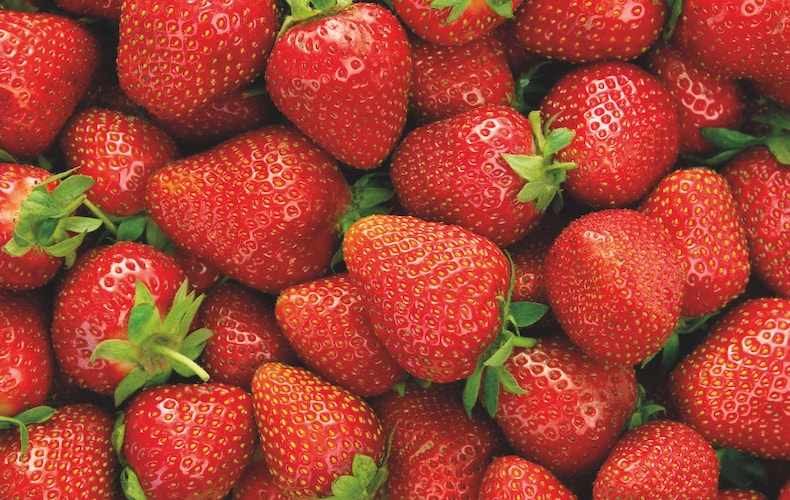
Strawberry 'Elsanta' can produce up to 500g of fruit in just a month
Image: Strawberry 'Elsanta' from Thompson & Morgan
It’s no surprise to find strawberries at the top of the list. We get through around 27,000 kilos of them during the Wimbledon Championships alone. For a traditional, well-loved, mid-season variety try strawberry 'Cambridge Favourite'. But don’t stick to classics at the expense of trying something new. Following eight years of intensive development work by our plant breeding team, strawberry 'Just Add Cream' produces exceptionally flavoursome and aromatic fruits. And if you prefer to grow yours on the patio, the showy flowers of 'Toscana' provide a fantastic ornamental display. Head over to our strawberries hub page for more top tips.
2. Raspberry
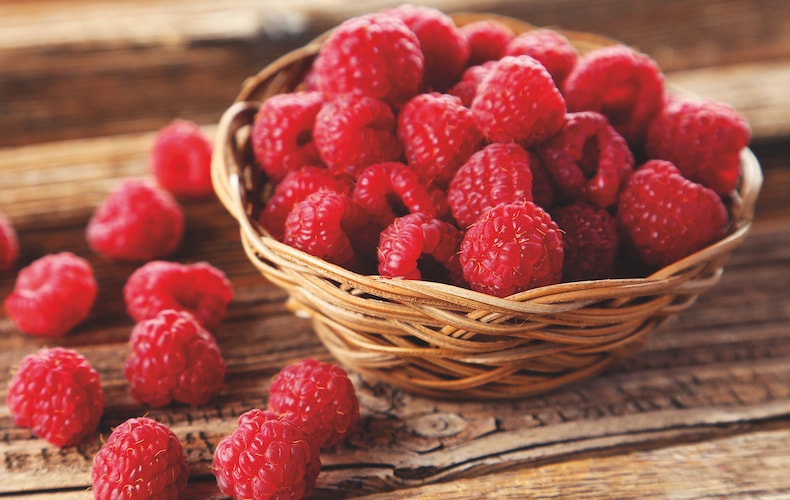
Harvest autumn-fruiting raspberries from late August to mid October
Image: Raspberry 'Autumn Bliss' (Autumn fruiting) from Thompson & Morgan
Home grown raspberries are perfect for summer snacks and desserts. Not only can you choose from summer and autumn-fruiting varieties, you can enjoy different colours like raspberry 'All Gold' which adds a joyful splash of yellow to your cakes and bakes. For a compact, thornless patio variety bred especially for containers, try Raspberry 'Ruby Beauty'. And for a continuous supply of delicious berries from June through to October, simply order a full season collection that includes three of our most popular varieties. For more specific growing advice, visit our raspberries hub page.
3. Blueberry
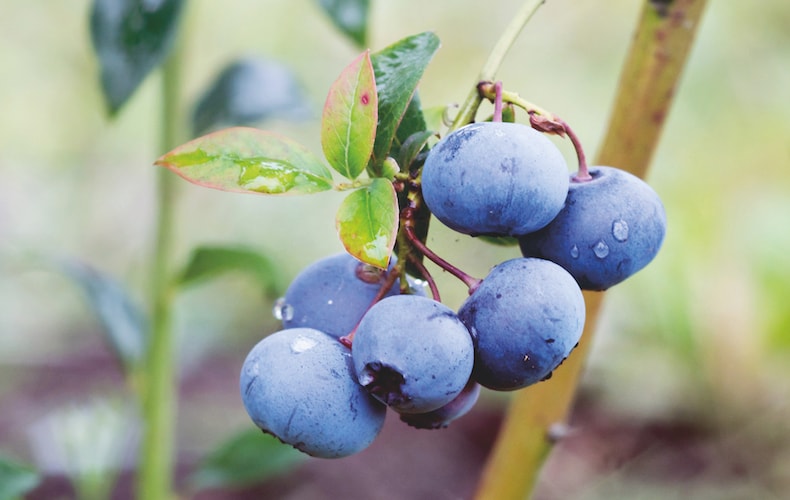
You can successfully grow 'Bluecrop' blueberries in large patio pots
Image: Blueberry 'Bluecrop' from Thompson & Morgan
Blueberries are packed full of healthy vitamins and make an excellent addition to pancakes, muffins and jams! These acid-loving plants need an ericaceous soil to flourish, but luckily they’re quite happy growing in containers. With pretty spring flowers and good autumn colour, these robust shrubs provide great ornamental value too. For best results, grow a few close together to help with pollination and increase yields. Blueberry 'BerryBux' can even be grown as a low, cropping hedge. Traditional Highbush varieties such as 'Duke' and 'Chandler' produce good yields of silver-dusted, dark blue fruits. For something a bit different, choose one of the newer pink varieties such as 'Pink Sapphire' which boasts particularly sweet berries.
4. Currants
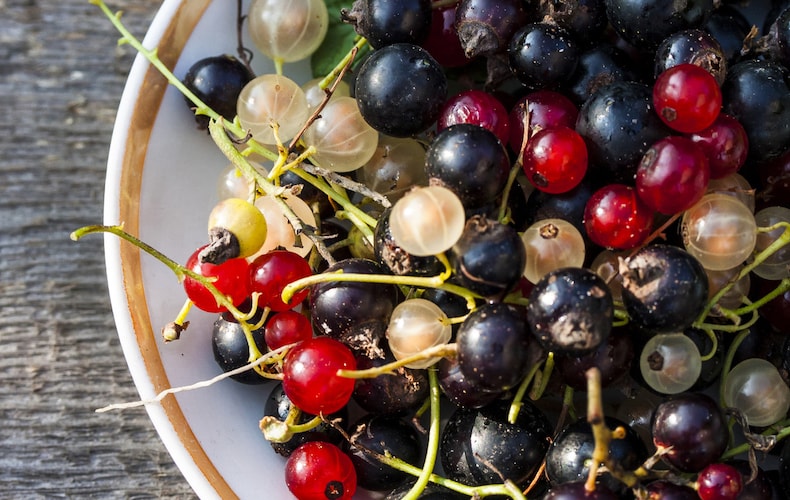
Use currants in desserts, sauces, jams and jellies
Image: Thompson & Morgan
Blackcurrants, whitecurrants and redcurrants are all cousins, and the fruits will set you back a small fortune in the supermarket. With their high-gloss skins, these fruits are extremely attractive and often used to decorate desserts. The sharp, tangy flavour makes them perfect for adding a bite to sauces, jams and jellies. Blackcurrants are particularly sharp and are best cooked to sweeten and release their complex flavour. Patio growers will like the compact blackcurrant 'Summer Pearls Patio' with its neat habit and enormous fruits. For even larger berries, try blackcurrant 'Big Ben'. Redcurrants and whitecurrants are sweeter in flavour, but retain a sharp acidity. Old favourite redcurrant 'Laxton's Number One' is widely grown for its opulent strings of jewel-like fruits. Whitecurrants such as 'Blanka' are less commonly seen, but equally worth growing.
5. Casseille
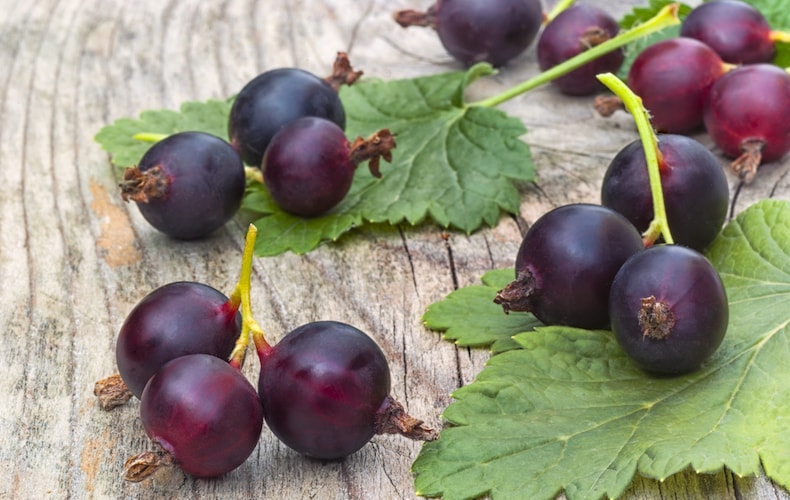
Enjoy casseille berries from July onwards
Image: Casseille from Thompson & Morgan
Commonly known as Jostaberry, this unusual fruit is a cross between a blackcurrant and a gooseberry. The result is a thornless bush with gooseberry-like foliage and fruits that resemble large blackcurrants.
The ripe berries are aromatic with a sweet but tart flavour. They make an intriguing addition to fruit salads where they can be mixed with sweeter berries. Casseille makes a fabulous jam too!
6. Gooseberry
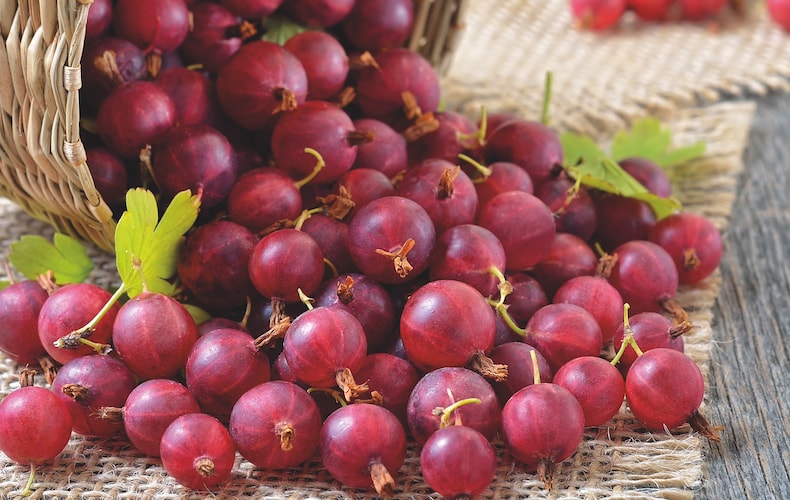
Harvest and eat Gooseberry 'Captivator' berries straight off the plant
Image: Gooseberry 'Captivator' from Thompson & Morgan
It’s difficult not to have a soft spot for the traditional gooseberry. Although most of us recognise this nostalgic fruit, few people actually grow it which is a shame, as it’s perfectly suited to the UK's cool, damp climate! Gooseberry 'Invicta' is a particularly heavy-cropping variety with pale green fruits which are excellent for pies and jams. 'Hinnonmaki Yellow' is also worthwhile for its golden fruits with a hint of apricot sweetness.
Red varieties produce sweeter fruits that can be enjoyed fresh from the bush. 'Xenia' has exceptionally sweet fruits and virtually spineless stems for easy picking.
7. Blackberry and its hybrids
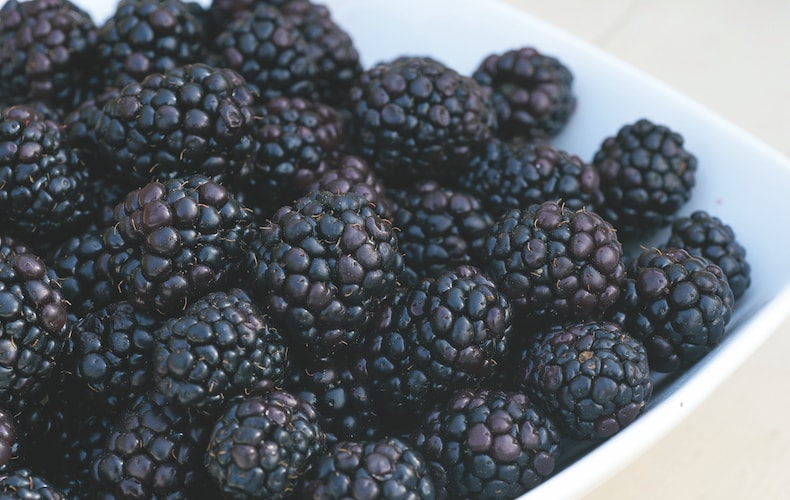
The first ever primocane blackberry, 'Reuben' can produce a yield of up to 3.5kg fruit per plant
Image: Blackberry 'Reuben' from Thompson & Morgan
Large juicy blackberries make a delicious summer treat. Compact varieties like blackberry 'Loch Ness' and 'Opal' are suitable for containers, making them a good choice for smaller gardens. blackberry 'Black Cascade can even be grown in a hanging basket. In recent years, breeders have turned their attention to developing larger fruits, such as the colossal berries of 'Black Butte' and 'Karaka Black'. For something a bit different, you can also grow white berries with blackberry 'Polaris'. Delicious blackberry hybrids include the loganberry (raspberry x blackberry) and tayberry (black raspberry x loganberry) which make an interesting addition to the fruit garden.
8. Cranberry
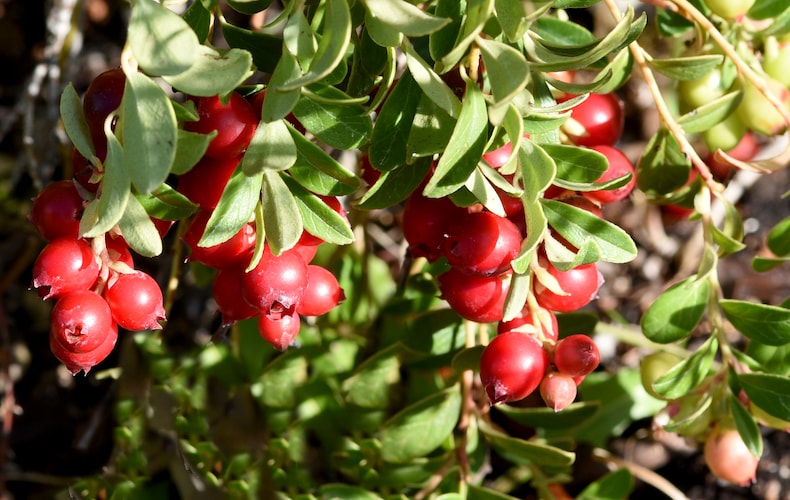
Packed full of goodness, cranberries are classed as a superfruit
Image: Cranberry from Thompson & Morgan
Like blueberries, these hardy evergreen shrubs require an acid soil or ericaceous compost. These low growing, creeping plants have an attractive cascading habit when grown in containers, making them ideal for patios. The glossy red berries have a sharp, tart flavour and are packed with Vitamin C. They are most commonly used for making cranberry sauce as an accompaniment to festive turkeys. Try cranberry 'Pilgrim' for a good crop of berries plus plenty of seasonal interest in the garden.
9. Goji berry
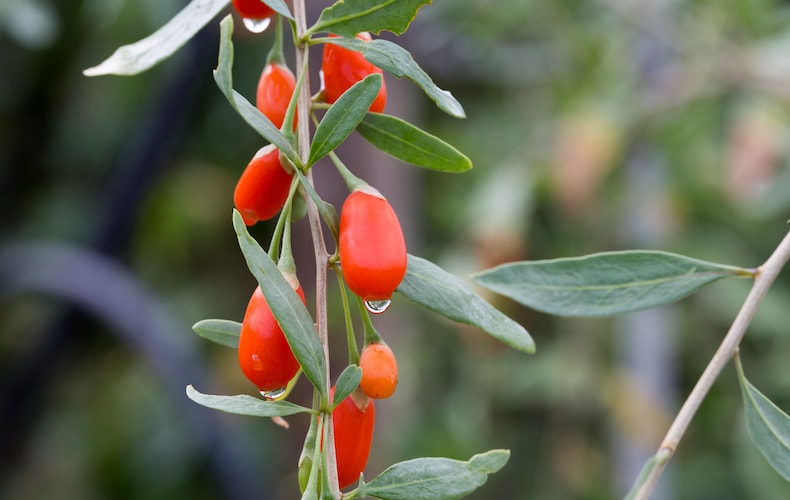
You can grow goji berries as individual shrubs, or as part of a hedge
Image: Goji Berry 'Sweet Lifeberry' from Thompson & Morgan
Lycium barbarum has found popularity in the western world under the name of goji berry. Reputed to be a 'superfruit', these berries are bursting with antioxidants and vitamins, and have been a staple food in China for centuries. These deciduous shrubs are best grown as part of a mixed border, where they boast pale lilac-pink flowers followed by oblong red fruits. There are quite a few varieties available but the newer cultivars such as goji berry 'Synthia' have been bred for a sweeter, more appealing flavour. The berries can be eaten fresh but are best dried or made into preserves.
10. Honeyberry
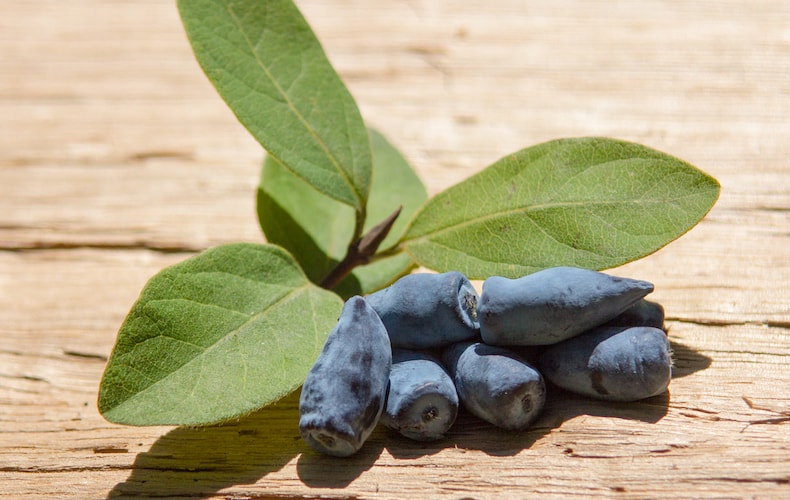
Add honeyberries to cakes, pies and preservatives for additional sweetness
Image: Lonicera kamtschatica 'Kalinka' from Thompson & Morgan
Honeyberry is another soft fruit that’s relatively new to UK gardens. These long, blue fruits are similar in colour, flavour and texture to blueberries, and are high in vitamin C. Honeyberries are the fruits of Lonicera kamtschatica plants and are best grown in pairs to improve pollination and maximise yields. Compact varieties including 'Balalaika' make an excellent choice for patio growing. 'Kalinka' was one of the earliest varieties available in the UK. Breeders have now developed sweeter varieties such as 'Myberry Sweet', and those with enormous berries such as 'Eisbar'. Honeyberries can be eaten fresh from the plant with your morning cereal, or baked into cakes and preserves.
Berries and currants are easy to grow! With so many compact plants available, there’s something for even the smallest of gardens. Why not choose your favourites and give them a try? For more information about growing your own fruit, read our dedicated fruit hub page.
See all Top 10 articles
Popular Top 10 Articles
- Top 10 Winter Vegetables
- Top 10 Potato Varieties
- Top 10 Easy-to-grow Fruit
- Top 10 Winter Bedding Plants
- Top 10 Summer Bedding Plants
- Top 10 Spring Flowering Bulbs
- Top 10 Summer Flowering Bulbs
- Top 10 Autumn/ Winter Flowering Bulbs
- Top 10 Evergreen Shrubs
- Top 10 Evergreen Shrubs for Small Gardens
- Top 10 Easy-to-grow Flowers
- Top 10 Cut Flowers
- Top 10 Hanging Basket Plants
- Top 10 Plants for Patios
- Top 10 Houseplants
- Top 10 Climbing Plants
- Top 10 Perennial Plants
- Top 10 Hardy Plants for Winter
- Top 10 Winter Garden Tips
- Top 10 Ornamental Grasses

Written by: Sue Sanderson
Plants and gardens have always been a big part of my life. I can remember helping my Dad to prick out seedlings, even before I could see over the top of the potting bench. As an adult, I trained at Writtle College where I received my degree, BSc. (Hons) Horticulture. After working in a specialist plantsman's nursery, and later, as a consulting arboriculturalist, I joined Thompson & Morgan in 2008. Initially looking after the grounds and coordinating the plant trials, I now support the web team offering horticultural advice online.Sign Up For Exclusive Special Offers




© 2025 Thompson & Morgan. All rights reserved. A division of Branded Garden Products Limited.
Sign up for exclusive offers!



